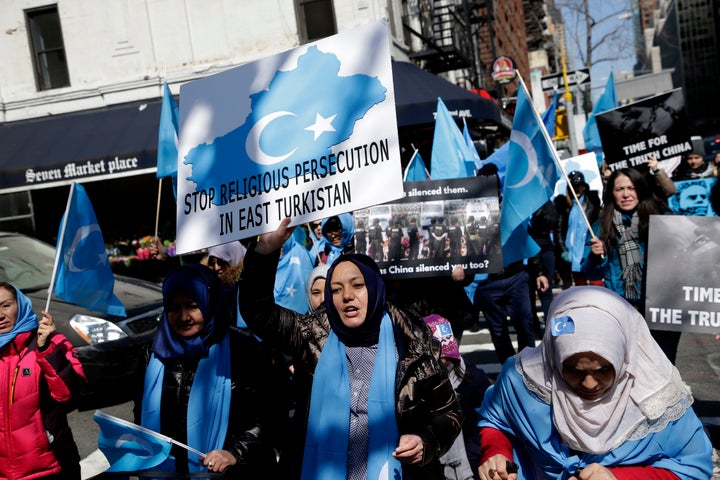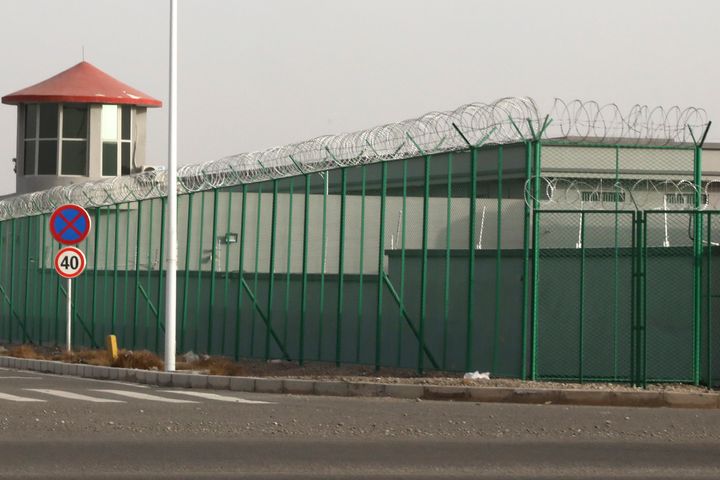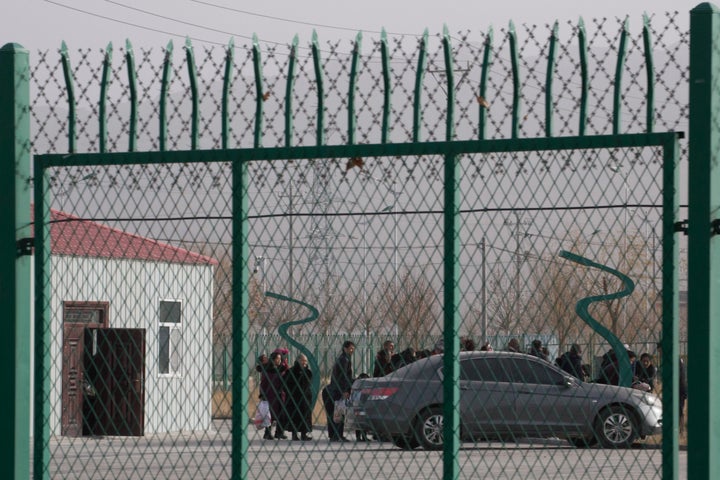CANBERRA, Australia (AP) — China appears to be expanding its network of secret detention centers in Xinjiang, where predominantly Muslim minorities are targeted in a forced assimilation campaign, and more of the facilities resemble prisons, an Australian think tank has found.
The Australian Strategic Policy Institute used satellite images and official construction tender documents to map more than 380 suspected detention facilities in the far northwestern region, highlighting internment camps, detention centers and prisons that have been newly built or expanded since 2017.
The report builds on evidence that China has made a policy shift from detaining Uighurs and other largely Muslim minorities in makeshift public buildings to constructing permanent mass detention facilities.
This is despite Chinese state news agency Xinhua reporting late last year that “trainees” attending “vocational education and training centers” meant to deradicalize them had “all graduated.”

Regional government chairman Shohrat Zakir was quoted as saying that foreign media reports of 1 million or 2 million people attending these centers were fabricated, though he would not provide any figures.
Chinese foreign ministry spokesperson Wang Wenbin on Friday dismissed the report as “pure disinformation and slander,” saying the Australian institute had “no academic credibility.” China does not operate “so-called detention camps” in Xinjiang, Wang told reporters at a daily briefing.
Citing media reports and investigations by internet users, Wang said one of the sites in the report had been identified as an electronics manufacturing park and another as a five-star residential complex.
“So we also hope that all sectors can distinguish truth from falsehood and together resist such absurd assertions concocted by anti-China institutions,” Wang said.

Predominantly Muslim minorities in the Xinjiang region have been locked in camps as part of a government assimilation campaign launched in response to decades of sometimes violent struggle against Chinese rule. Though officials described the camps as “boarding school-like” facilities meant to provide free job training, former detainees say they were subjected to brutal conditions, political indoctrination, beatings, and sometimes psychological and physical torture.
Under the assimilation drive, the state has forced Uighurs to undergo sterilizations and abortions, an Associated Press investigation found, and in recent months, has ordered them to drink traditional Chinese medicines to combat the coronavirus.
Australian Strategic Policy Institute researcher Nathan Ruser wrote in the report released late Thursday: “Available evidence suggests that many extrajudicial detainees in Xinjiang’s vast ‘re-education’ network are now being formally charged and locked up in higher security facilities, including newly built or expanded prisons, or sent to walled factory compounds for coerced labor assignments.”
At least 61 detention sites had undergone new construction and expansion work in a year to July 2020, the report said. These included at least 14 facilities still under construction this year.
“Of these, about 50% are higher security facilities, which may suggest a shift in usage from the lower-security, ‘re-education centers’ toward higher-security prison-style facilities,” Ruser wrote.

At least 70 facilities appeared to have lesser security by the removal of internal fencing or perimeter walls, the report said.
These included eight camps that showed signs of decommissioning, and had possibly been closed. Of the camps stripped of security infrastructure, 90% were lower security facilities, the report said.
The think tank’s findings align with AP interviews with dozens of relatives and former detainees that indicate many in the camps have been sentenced in secret, extrajudicial trials and transferred to high-security prisons for things like having contact with people abroad, having too many children and studying Islam. Many others deemed less of a risk, like women or the elderly, have been transferred to a form of house arrest or forced labor in factories.
